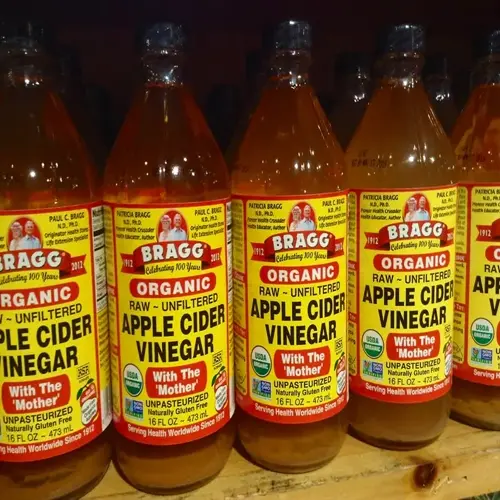10 Healthy Eating Tips for Beginners

Written by
Chen Jialiang
Reviewed by
Prof. Benjamin Murphy, Ph.D.Beginning a healthy diet involves a commitment to cooking simple meals at home each week.
If possible, combine a healthy protein with a fiber snack (ex: celery with peanut butter, carrot sticks), to sustain energy between meals.
Eating whole foods instead of restrictive diets is a healthy practice.
Movement is an important part of the equation to boost your nutrition.
Read labels to find hidden sugars and sodium in pre-made foods.
Prioritize slow, steady changes instead of seeking perfect eating.
Article Navigation
Healthful eating for beginners involves making healthy choices most of the time by eating foods that nourish and energize your body and mind, both collectively known as the body/mind. It's more about progress than perfection. Little things can lead to significant developments over time. This article shares 7 practical hints to get started.
You may not know where to start. It's okay! Begin with one small change, such as incorporating more vegetables into your dinner. These tips are doable. They build habits that stick without being overwhelming.
Remember that every small positive choice makes a difference. For example, drinking water instead of soda is a good choice. Preparing one meal at home counts. Enjoy these little victories. They will help with sustained improvements in health. You gain confidence from succeeding.
Cooking and Meal Preparation Basics
Begin with only one or two at-home meals each week to build confidence without stress. Select a couple of easy meals, such as roasted vegetables with canned beans or scrambled eggs with frozen spinach. These meals take little effort but return valuable nutrition.
Keep these affordable backbone products on hand: frozen vegetables (which keep their nutrients), canned beans (which are full of protein and fiber) and olive oil (for healthy fats). They last a long time in the pantry and mean fewer trips to the grocery store. You save money eating healthier.
Try sheet-pan recipes like chicken breasts, broccoli, and mashed sweet potatoes. Toss everything in oil and spices, then bake. This recipe requires just one pan, minimal prep, and easy cleanup. You have balanced meals without kitchen chaos.
Store chopped onions, peppers, or cooked grains in airtight containers. Prepared ingredients stay fresh for days at a time and become instant building blocks for omelets, salads, or grain bowls. You save food waste and speed up meal assembly.
Incorporate Physical Activity
Exercise improves your nutrition efforts because it helps support metabolism and energy balance. Think of exercise as your body's natural link to healthy eating. Minor movements, such as walking, enhance how the body utilizes nutrients from the food eaten without requiring extreme measures.
The best way to begin is to walk because it's easily accessible and doesn't need equipment, plus the hour is flexible. A ten-minute walk taken after meals or early in the morning near your home or in local parks is a gentle exercise that helps digestion and builds stamina. This is the easiest exercise for the beginner.
Relate physical activity to your routines, like cooking breaks.Do heel raises while waiting for water to boil or stretch while oven timers beep. Make everyday household tasks opportunities for activity: sweep quickly or garden for fifteen minutes.
Prioritize consistency over intensity. Short and regular workouts are good, and more productive than an intense workout, far less often. Aim to work out 5 days per week instead of working out intensely too few times. This develops more habitual and healthier workout patterns, which complement your nutrition journey.

Walking
- Benefit: Low-impact activity improves cardiovascular health by increasing heart rate without straining joints, ideal for all fitness levels and ages
- How to start: Begin with 10-minute sessions after meals, gradually increasing duration by 5 minutes each week
- Goal progression: Aim for 150 minutes weekly at moderate pace, split into 30-minute walks five days weekly
- Terrain tips: Start on flat surfaces like sidewalks before advancing to gentle hills for natural intensity variation
- Gear recommendation: Wear supportive athletic shoes with cushioned soles to reduce impact on knees and ankles
- Weather adaptation: Use indoor tracks or shopping malls during extreme heat or rain conditions to maintain consistency

Stretching
- Benefit: Enhances flexibility and reduces muscle stiffness after prolonged sitting, improving daily movement range significantly
- How to start: Try shoulder rolls and hamstring stretches during TV commercials or work breaks regularly
- Goal progression: Incorporate 5-minute sessions morning and evening, adding new stretches each week progressively
- Safety tip: Never bounce during stretches; hold gentle tension for 20 seconds per major muscle group
- Equipment: Use thick yoga mat for comfort during floor exercises like seated forward bends
- Routine building: Focus sequentially on neck, shoulders, back, hips, and legs for balanced flexibility

Gardening
- Benefit: Combines physical movement with stress relief through nature connection, engaging multiple muscle groups simultaneously
- How to start: Weed or water plants during 15-minute sessions three times weekly using basic tools
- Goal progression: Increase gradually to 30-minute sessions incorporating digging and carrying potted plants
- Posture awareness: Keep back straight and bend knees when lifting heavy bags of soil or mulch
- Seasonal adaptation: Shift to indoor herb gardens during cold winter months to maintain regular activity
- Tool selection: Use ergonomic pruners and cushioned kneepads to reduce joint strain during extended sessions

Dancing
- Benefit: Elevates mood through rhythmic music while burning calories enjoyably, improving coordination and balance substantially
- How to start: Follow online tutorials for 10-minute dance routines wearing loose comfortable clothing
- Goal progression: Three 20-minute sessions weekly with varied styles like salsa or energetic swing dancing
- Space setup: Clear furniture from living area to create adequate safe movement space at home
- Intensity control: Begin with slower tempo music before progressing gradually to faster upbeat tracks
- Social option: Invite friends for virtual dance parties to increase motivation and shared enjoyment

Stair Climbing
- Benefit: Builds lower body strength and boosts metabolic rate effectively through natural resistance movement
- How to start: Use stairs instead of elevators for 1 to 2 flights daily at comfortable steady pace
- Goal progression: Gradually increase to 5 to 10 flights daily while maintaining controlled steady breathing patterns
- Form focus: Hold rail lightly, step fully on each stair surface, avoid leaning forward excessively
- Footwear importance: Wear supportive athletic shoes with good arch support to prevent foot fatigue
- Tracking method: Count flights using simple phone app or fitness tracker to monitor weekly improvements

Yoga
- Benefit: Improves balance and core strength through controlled poses while reducing stress levels effectively
- How to start: Beginner YouTube videos focusing on foundational positions like mountain pose alignment
- Goal progression: Practice three 15-minute sessions weekly emphasizing breath-movement coordination carefully
- Essential poses: Master cat-cow, child's pose, and downward dog positions before advanced sequences
- Breath technique: Coordinate movements with deep inhales through nose and complete exhales through mouth
- Props usage: Utilize foam blocks or folded towels for support during challenging balance positions

Cleaning
- Benefit: Transforms household chores into calorie-burning functional movement that engages multiple muscle groups actively
- How to start: Focus on vigorous 20-minute cleaning bursts twice weekly with intentional full motions
- Goal progression: Incorporate squatting motions while organizing low shelves for effective leg strengthening
- Posture protection: Alternate hands during scrubbing and vacuuming tasks to prevent muscle imbalances
- Hydration reminder: Keep water bottle nearby since active cleaning causes noticeable fluid loss
- Efficiency tip: Combine tasks like lunging while dusting low surfaces for comprehensive full-body engagement

Swimming
- Benefit: Full-body resistance exercise gently improves joint mobility while enhancing lung capacity substantially
- How to start: Begin with 10-minute pool walks in waist-deep water focusing on arm-leg coordination
- Goal progression: Build to 30-minute continuous laps using freestyle or backstroke swimming techniques
- Breathing practice: Turn head sideways during strokes while exhaling bubbles underwater rhythmically
- Gear enhancement: Use kickboards for focused leg workouts and pull buoys for isolated arm strengthening
- Temperature comfort: Select heated pools if cooler water initially causes muscle tightness issues

Cycling
- Benefit: Strengthens leg muscles while providing outdoor exploration opportunities with minimal joint impact
- How to start: Short 1-mile rides on flat terrain using neighborhood streets at comfortable leisurely pace
- Goal progression: Increase distance gradually to 5-mile rides three times weekly including small inclines
- Bike fit: Adjust seat height so knees maintain slight bend at pedal's lowest rotation point
- Safety protocol: Always wear certified helmet and use front/rear lights during low visibility conditions
- Route planning: Map circular routes strategically to avoid fatigue during return trips from distant points

Play Activities
- Benefit: Makes exercise enjoyable through games that boost heart rate and improve dynamic coordination skills
- How to start: Family games like tag or frisbee in local parks during 20-minute energetic sessions
- Goal progression: Thirty-minute sessions four times weekly with varied games ensuring full-body engagement
- Adaptation tip: Modify rules creatively for different fitness levels like smaller play areas for intensity
- Equipment choices: Select soft balls or foam equipment to minimize injury risks during active play
- Social benefit: Encourages laughter and meaningful connection while achieving physical activity goals together
Healthy Snacking Ideas
Combine protein with fiber in snacks for sustained energy between meals. Try slices of apple with almond butter or Greek yogurt with berries. These combinations prevent sugar crashes. They keep you full longer than processed food alternatives, such as chips.
For ease of understanding, utilize visual portion guides. An average serving of nuts will fit in the palm of your hand. Hummus to go with carrot sticks should only fill half a shot glass. Cottage cheese with pineapple only needs a small teacup. No scales are required.
Opt for whole food substitutes for processed snacks. Replace chocolate bars with dark chocolate bars that contain nuts. Change chips for baked chickpeas. These alternatives meet your cravings and provide nutrients without empty calories. Therefore, they support health goals connected with diet.
Preparing five-minute snacks is easier. Weekly, bake hard-boiled eggs for a quick protein boost to grab on the go. Pre-cut vegetables can be stored in water for crispness. Portion out nuts in baggies. These few shortcuts will make healthy snacks more automatic when hunger strikes and you don't want to think about what to eat.
Apple Slices with Almond Butter
- Nutrition: Provides 4g fiber from fruit and 7g healthy fats/protein from nuts, supporting sustained energy between main meals
- Portion: 1 medium apple + 2 tbsp/30ml almond butter (about 190 calories total)
- Prep tip: Sprinkle cinnamon for antioxidant boost without added sugar; slice apples just before eating to prevent browning
- Storage: Store almond butter upside down for easy mixing; refrigerate after opening to maintain freshness
- Variation: Substitute peanut or cashew butter for different flavor profiles and nutrient benefits
- Budget hack: Buy bulk almonds and make homemade butter to reduce cost by 40% compared to pre-packaged options
Carrot Sticks and Hummus
- Nutrition: Vegetables offer vitamin A while chickpeas provide 5g plant-based protein per ¼ cup/60ml serving
- Portion: 1 cup/130g carrot sticks + ¼ cup/60ml homemade hummus (approx. 150 calories)
- Variation: Use colorful bell pepper strips or cucumber rounds for visual appeal and phytonutrient diversity
- Dip alternative: Try Greek yogurt mixed with herbs for lower-calorie protein-rich option when desired
- Prep shortcut: Buy pre-cut veggies to save time; blend hummus with roasted red peppers for flavor twist
- Serving idea: Arrange in mason jars for portable snack during work or travel activities
Greek Yogurt with Berries
- Nutrition: Probiotics support gut health while mixed berries deliver antioxidants and 4g fiber per ½ cup/75g
- Portion: ¾ cup/170g plain yogurt + ½ cup/75g fresh/frozen berries (around 120 calories)
- Enhancement: Add 1 tbsp/15g chia seeds for 5g omega-3 fatty acids and extra thickness to texture
- Sweetness tip: Mix in vanilla extract instead of sugar; use frozen berries for natural syrup effect
- Dairy-free option: Substitute with coconut yogurt fortified with calcium and vitamin D when needed
- Topping idea: Sprinkle with 1 tsp/5g flax seeds for additional fiber and anti-inflammatory benefits
Hard-Boiled Eggs
- Nutrition: Complete protein (6g per egg) with essential amino acids and brain-supporting choline nutrients
- Portion: 2 eggs seasoned with black pepper or paprika (approx. 140 calories total)
- Storage: Prepare batch weekly; store peeled eggs in water-filled container for ready-to-eat convenience
- Flavor boost: Sprinkle with everything bagel seasoning or drizzle with hot sauce for variety
- Portable pack: Carry in silicone containers with ice pack for post-workout protein replenishment
- Safety note: Consume within 5 days when refrigerated below 40°F/4°C to prevent spoilage risks
Mixed Nuts and Seeds
- Nutrition: Healthy fats, magnesium, and zinc from unsalted varieties; ¼ cup/35g provides 7g protein
- Portion: Small handful (about ¼ cup/35g) raw or dry-roasted (approx. 200 calories)
- Combination: Walnuts (omega-3), almonds (vitamin E), pumpkin seeds (iron), sunflower seeds (selenium)
- Portion control: Pre-divide into small bags to avoid overeating calorie-dense mixtures
- Freshness test: Ensure nuts float in water; discard if rancid smell detected during inspection
- Budget tip: Purchase from bulk bins to reduce packaging waste and cost by approximately 30%
Cottage Cheese with Pineapple
- Nutrition: Slow-digesting casein protein (14g per ½ cup/115g) with vitamin C from pineapple enzymes
- Portion: ½ cup/115g cottage cheese + ⅓ cup/80g fresh pineapple chunks (about 160 calories)
- Texture: Choose small-curd 2% milkfat version for creamier consistency and better mouthfeel experience
- Sweetness balance: Drain canned pineapple in juice (not syrup) to reduce added sugar content
- Savory alternative: Top with cherry tomatoes and basil instead of fruit for low-carb option
- Protein boost: Stir in 1 tbsp/10g hemp seeds for additional 5g plant-based protein per serving
Whole-Grain Crackers with Avocado
- Nutrition: Complex carbohydrates (5g fiber) with heart-healthy monounsaturated fats from avocado
- Portion: 4-6 crackers + ¼ mashed avocado (approx. 180 calories depending on cracker choice)
- Seasoning: Top with everything bagel spice or chili flakes for flavor without extra calories
- Cracker selection: Choose brands with whole grain as first ingredient and <200mg sodium per serving
- Ripeness tip: Use slightly firm avocados that yield to gentle pressure for perfect spreading texture
- Oxidation prevention: Leave pit in unused portion; coat with lemon juice before refrigerating
Edamame with Sea Salt
- Nutrition: Plant-based protein (17g per cup/155g) and 8g fiber from young soybeans in pods
- Portion: 1 cup/155g steamed pods sprinkled with ⅛ tsp/0.6g sea salt (approx. 190 calories)
- Convenience: Buy frozen pre-portioned bags; steam in microwave for 3 minutes when time-limited
- Seasoning variation: Toss with garlic powder or sesame oil instead of salt for flavor diversity
- Pod technique: Squeeze pods gently to pop beans directly into mouth, avoiding shell consumption
- Protein comparison: Contains same protein as 2 eggs but with additional fiber and mineral content
Turkey Roll-Ups
- Nutrition: Lean protein (10g per 2 slices) with vegetable crunch in low-carb, high-volume format
- Portion: 2 slices turkey + lettuce + 2 cucumber strips (approx. 70 calories without spreads)
- Alternative spread: Use 1 tbsp/15g hummus instead of cream cheese for plant-based fat source
- Selection tip: Choose low-sodium deli turkey without added sugars or artificial preservatives
- Vegetable swap: Substitute bell pepper strips or carrot ribbons for cucumber when preferred
- Packaging: Wrap in parchment paper instead of plastic for eco-friendly storage solution
Dark Chocolate and Almonds
- Nutrition: Antioxidants from 70%+ cocoa paired with vitamin E and magnesium from almonds
- Portion: 1 oz/28g dark chocolate + 10 almonds (approx. 210 calories combined)
- Selection: Choose minimally processed chocolate with <8g added sugar per serving portion
- Pairing science: Fat in almonds enhances cocoa antioxidant absorption by up to 40% in studies
- Melting prevention: Store in cool place below 70°F/21°C; avoid direct sunlight exposure
- Budget note: Purchase bulk dark chocolate bars instead of individual packs to save 25% cost
Core Nutrient Principles
Consider protein to be the building blocks of the body that repair muscles and build enzymes. Carbohydrates are the fuel that gives you energy for the day. Fats help the brain to function and aid in the absorption of vitamins. The three work together as cogs in a well-oiled machine.
Opt for nutrient-rich foods like vegetables, fruits, and whole grains rather than empty-calorie foods. Broccoli contains vitamins and fiber, while soda only contains sugar. Nutrient-dense foods nourish your body in a way that does not add excess calories.
Aim for balance instead of food bans. Allow treats (in moderation) while focusing on whole foods. Don't exclude food groups. This behavior modification plan won't leave you feeling deprived and will help you maintain long-term healthy eating habits.
Hydration moves nutrients throughout your body. Water moves vitamins to cells and removes waste. The goal is to drink six to eight glasses each day. Herbal teas and water-rich foods, such as cucumber, also contribute to meeting your fluid needs.
Managing Sugars and Sodium
Comprehend how natural sugars differ from added sugars. The sugars in fruit are natural sugars with fiber, while the sugars in soda are empty calories or added sugars. Maple syrup and honey are classified as added sugars, despite being derived from natural sources. Work on limiting processed foods, including those with added sugar, without labeling them as such.
Be aware of sneaky sodium sources such as canned soup containing 940 mg/0.033 oz sodium per can and bread containing 300 mg/0.01 oz sodium per two slices. Condiments such as ketchup add sugar and sodium to the diet. Reading labels will help you identify these hidden traps for sodium.
Experiment with flavor swaps in place of salt or sugar. Use garlic powder and herbs to season vegetables instead of salt. Use cinnamon to flavor oatmeal instead of sugar. Use lemon juice to brighten dishes instead of sodium. These changes in flavor enhance the taste without using unhealthy additives.
Understand label-reading thresholds: Low-sodium means less than 140mg per serving, and low-sugar is less than 5g per serving. Reduced-sodium must be 25 % less than regular. These thresholds really do help you differentiate between healthier foods, and truly healthier foods.
5 Common Myths
After 6 pm, eating carbohydrates can lead to weight gain automatically, regardless of total day calories consumed.
Good weight maintenance comes from total calorie balance over a twenty-four hour period and not from the timing of the meals. The body metabolizes nutrients all through the daytime and night-time hours with no difference according to the time of the day, but according to energy needs. Healthy carbohydrates from whole grain products and vegetables can be enjoyed at night in reasonable amounts, when eaten so as to keep within the day's calorie allowance for successful weight balance.
All types of dietary fats equally contribute to the risk of heart disease, regardless of their source or composition.
Different fats affect heart health in different ways. Unsaturated fats from foods like avocados, nuts and olive oil actually promote heart health by improving cholesterol levels. While saturated fats in processed meats and fried foods should be limited, trans fats in partially hydrogenated oils are particularly detrimental and should be eliminated altogether for optimal heart protection.
Skipping meals is a practical way to reduce the amount of calories one consumes and the effectiveness of weight loss over time.
Eating meals at regular intervals allows for the sustained stability of blood sugar and prevents binge eating. Skipping meals can cause excessive hunger which, if not satiated, can lead to unsafe eating behaviors and nutritional deficiencies. In order for the metabolism and energy levels to prevail, a pattern of eating is preferable which allows for the regular distribution of food over the course of a day, rather than bingeing late in the day after having fasted.
Organic-labeled foods automatically provide superior nutritional value compared to conventionally grown alternatives regardless of the specific food item.
Nutritional quality depends more on food choices and preparation methods than organic certification. Both organic and conventional fruits and vegetables provide essential vitamins and minerals. The term 'organic' refers to farming practices without synthetic pesticides, but it doesn't guarantee higher nutrient density. Focus on including diverse, minimally processed foods regardless of production methods for balanced nutrition.
Healthy eating involves using products that require the expense of specialty items which are not accessible to food budget limited people.
Nutritious diets can be in reach economically with strategic choices such as seasonal products, whole grains bought in bulk and proteins of vegetable origin. Items like oats, beans, lentils, frozen vegetables, and eggs offer great nutrients at low cost. Planning meals, waste reduction and cooking at home, will offer healthy eating without specialty priced organic or other specialty diet products for nutritional adequacy.
Conclusion
Sustainable, healthy eating means making incremental improvements rather than striving for perfection. Begin with just one manageable shift from this article, say cooking twice a week or substituting soda with water. Small, consistent steps lead to sustainable improvement, rather than overwhelming you.
Prioritize constancy, not intensity. Ten minutes a day of walking is far more worthwhile than one lengthy workout a month. Two meals a week that provide vegetables are far more valuable than a diet that isn't long-lived. It is through small, consistent efforts that habits for life are built and a state of health is achieved.
Your personal health path is unique to your life and individual preferences. Rejoice in every positive decision, whether it's getting whole-grain bread or making snacks ahead of time. Progress is different for everyone. Trust your pace and respect what is best for your body.
You now have actionable ideas to implement today. Choose one tip that seems feasible for you to do today. Keep in mind that nourishment is about feeling strong and energised! Your road to greater health and wellness begins with this initial step forward.
External Sources
Frequently Asked Questions
How do beginners start eating healthier?
Beginners can start by preparing simple home-cooked meals 1-2 times weekly using whole ingredients like frozen vegetables and lean proteins. Focus on balanced plates with vegetables, proteins and whole grains while gradually reducing processed foods.
What are easy healthy meal ideas for beginners?
Simple beginner-friendly meals include:
- Oatmeal with berries and almonds for breakfast
- Whole-grain wraps with hummus and veggies for lunch
- Baked salmon with sweet potatoes and broccoli for dinner
- Apple slices with almond butter for snacks
How can I reduce sugar and sodium intake?
Reduce hidden sugars and sodium by:
- Choosing plain yogurt instead of flavored varieties
- Selecting low-sodium canned soups and diluting with water
- Using herbs and spices instead of salt for seasoning
- Reading labels to avoid products with added sugars
- Swapping condiments like ketchup for mashed avocado
What nutrients should beginners prioritize?
Focus on these essential nutrients in balanced proportions:
- Protein for muscle repair (eggs, chicken, lentils)
- Fiber for digestion (oats, berries, broccoli)
- Healthy fats for brain function (avocados, olive oil)
- Complex carbs for sustained energy (quinoa, brown rice)
- Calcium for bone health (kale, fortified plant milks)
Are there exercise routines that complement healthy eating?
Beginner-friendly activities that support nutrition include walking, stretching, gardening and dancing. Start with 10-minute sessions of low-impact movement daily, focusing on consistency rather than intensity to build sustainable habits alongside dietary improvements.
What healthy eating myths should beginners ignore?
Common nutrition myths to avoid include beliefs that:
- Carbs after 6pm cause automatic weight gain
- All dietary fats are equally harmful
- Skipping meals accelerates weight loss
- Organic foods are always nutritionally superior
- Healthy eating requires expensive specialty ingredients
How can I maintain healthy eating habits long-term?
Sustainable habits form through gradual changes like starting with one weekly home-cooked meal, prepping ingredients in advance, and focusing on consistency rather than perfection. Celebrate small victories and allow flexibility in your approach to nutrition.
What are satisfying healthy snack options?
Nutritious snacks that balance protein and fiber include:
- Greek yogurt with berries and chia seeds
- Carrot sticks with hummus
- Hard-boiled eggs with everything seasoning
- Mixed nuts and seeds
- Cottage cheese with pineapple
How do I read nutrition labels effectively?
Focus on these key label sections:
- Serving size to understand portion amounts
- Added sugars (aim for under 5g per serving)
- Sodium content (choose under 140mg per serving)
- Fiber and protein amounts for satiety
- Ingredient list length (shorter is often better)
What does a balanced beginner meal plan include?
A balanced beginner plan features regular meals and snacks containing:
- Lean proteins in every meal
- Colorful vegetables at lunch and dinner
- Whole grains for sustained energy
- Healthy fats like avocado or olive oil
- Hydration through water and herbal teas

